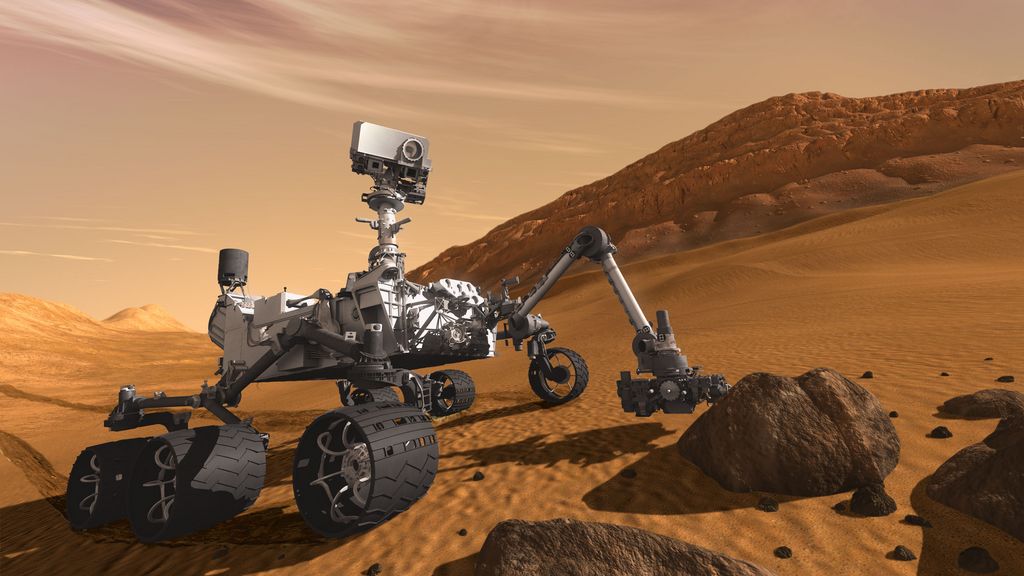King of Mars
King of Mars
An Australian geologist’s role in NASA’s Curiosity mission
Image courtesy JPL/NASA
Early on the morning of August 6 2012, a group of scientists held their breath as Curiosity, NASA’s latest Mars rover, streaked through the thin Martian atmosphere in ball of fire. One of those scientists was Dr Penny King a geologist currently working at the Australian National University.
“It’s the opportunity of a lifetime to be involved in a mission that explores new areas in our solar system,” Dr King says, “And based on past missions, we expect to find out that the Martian surface is more diverse and interesting than we could ever have imagined.”
Although the possibility of life on Mars is a strong driver for exploration of the red planet, Curiosity’s primary mission isn’t to look for that life directly. Instead, it will assess how suitable the environment of Mars is for supporting life either in the present or at some point in the distant past.
Dr King is part of a small team of scientists that will be working with one of the instruments on curiosity, the Alpha Particle X-Ray Spectrometer (APXS), which is sponsored by the Canadian Space Agency. The APSX’s job is to identify elements present in rocks enabling geologists to identify those rocks and build that information into a detailed picture of the geological history of Mars.
Undergraduate degrees
If you are fascinated by the universe and everything around you than one of our degrees in science, earth science, astronomy or astrophysics might be just what you are looking for.
Science impacts every part of our lives—from what we eat to the devices we use to keep in touch with our friends. Imagine being part of the future scientific discoveries that will define your generation.
Postrgraduate degrees
Master of Earth Science (Advanced)
Earth Science deals with complex systems and processes that shape our planet. Pressing issues such as the safe supply of water, resources and energy, climate change, sea level rise as well as natural hazards are all intimately related to Earth Sciences.
Master of Astronomy and Astrophysics (Advanced)
The Master of Astronomy & Astrophysics (Advanced) is a full-time two year program based upon 50% coursework and 50% research project.

